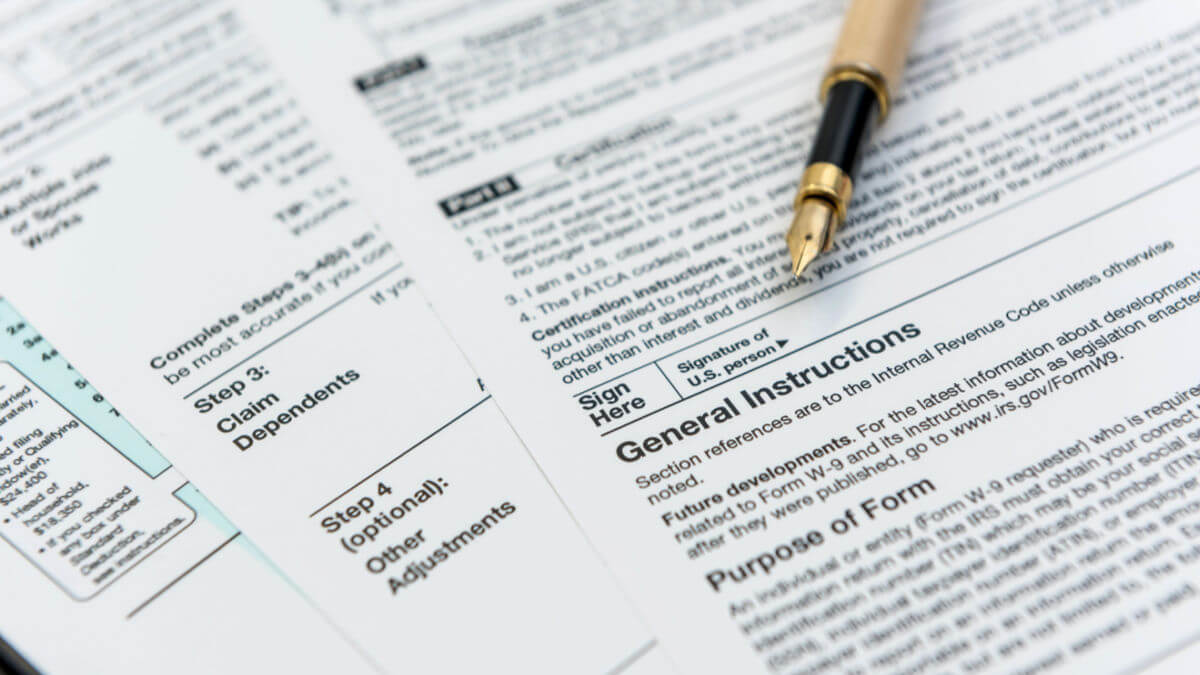American banks in Spain: branches and more
Read on to find out what US banks have branches in Spain and tips on banking in the country.

Transferring money overseas (to or from America) is common practice — whether you are moving funds from one account to another, giving or receiving a gift, or you’ve come into an inheritance. Whatever the reason may be, if you're sending or receiving large sums of money from abroad it’s important to be aware of international money transfer laws.
Example: If transactions are more than 10,000 USD you are responsible for reporting the transfers to the IRS. Being unaware is no excuse when it comes to the Financial Crimes Enforcement Network¹. Otherwise called FinCEN, this bureau of the United States Department of the Treasury collects and analyzes information about financial transactions to combat domestic and international money laundering, terrorist financing, and other financial crimes.
Keep in mind, this guide will look at the tax implications from a US perspective. The country where money is being sent to or from has its own set of rules.
This blog is a good start for you to get familiar with the process, but in no way it replaces seeking a professional advisor, as there's no "one size fits all" solution when it comes to your taxes.
| 📑 Table of Contents |
|---|
| This article has been written in collaboration with Katelynn Minott — Managing CPA and CEO at Bright!Tax US Expat Tax Services. |
|---|
Financial institutions (including money transfer providers) are obligated by The Bank Secrecy Act of 1970² to report international transfers that are over 10,000 USD.
Though transactions below this threshold are normally not reported, banks are still required to monitor all transactions and report suspicious activity.
For example — someone sending multiple smaller payments to try and avoid tax obligations by sneaking under the 10,000 USD threshold may be flagged.
There are a couple of reasons why these measures are in place. For one, the US government enforces these thresholds to detect and prevent money laundering and fraudulent activities.
The rule is also designed to make it very difficult to use offshore accounts as tax shelters.
You may be asking yourself — what counts as a gift? The IRS classifies gifts as any transaction where no goods or services are expected in exchange.
Gifts provided to foreign citizens receive the same treatment as gifts between US citizens, and as a general rule, any gift is taxable.
That being said, a few tax-exempt exceptions exist:
- Gifts to your spouse (if they’re a US citizen)
- Gifts to a political organization
- Tuition or medical expenses for someone
Let’s break the gift tax down further.
Gifts that have a lower value than the annual exclusion are not reportable. In 2022, the annual gift exclusion is 16,000 USD³.
Keep in mind that this threshold is when gifting to an individual recipient in one tax year. Some good news — there is no limit to the number of people you can gift in one tax year.
Now, what happens if you do go over this annual threshold for a single recipient? Your obligation lies in reporting these gifts on Form 709⁴. (More good news): In most cases, you will not owe money to the IRS unless you’ve surpassed the lifetime gift tax exemption. In 2022, this limit was set at 12.06 million dollars.
Let’s bring this to life with an example. This year, you decide to give five people 18,000 USD each. Though you’re technically surpassing the annual exclusion of 16,000 USD by 2,000 USD per person, you can use the lifetime gift tax exemption to not owe tax.
Instead, you’d deduct 10,000 USD from your lifetime tax-free limit. In other words, five times the 2,000 USD you exceeded per person limit.
If you do exceed the lifetime exemption, the donor is generally responsible for paying gift tax — which ranges from 20 to 40%.
Under special arrangements, the donee may agree to pay the tax instead. It is important to speak with a tax professional if you are considering this kind of arrangement.
Sending money from your US account to another country
Let’s start with the basics — all money transfers abroad exceeding the 10,000 USD threshold should be evaluated for reporting obligations.
The Foreign Account Tax Compliance Act⁵ is a federal law that compels all foreign financial institutions to report foreign accounts and assets of US taxpayers.
Furthermore, it requires individuals to report foreign bank accounts and financial assets when they file their US tax return on Form 8938⁶, if they’ve met certain thresholds.
A related but separate requirement for reporting foreign financial accounts is the Foreign Bank Account Report (FBAR)⁷, provided you meet the filing threshold. If you hold more than 10,000 USD in total across all accounts abroad, on any given day during the tax calendar year you must file the FBAR.
It's worth clarifying as we close this quick section — both the FATCA and FBAR are only reporting tools and don’t inherently drive any tax liability.
If you have decided to purchase a home overseas, it's not a reportable transaction for the IRS. Since no income is earned, the purchase does not need to be disclosed on your US tax return.
One thing you will need to be mindful of is any foreign accounts you may have that hold the funds of the purchased property. In this case, it won’t only trigger the FBAR’s 10,000 USD reporting threshold but may also trigger Form 8938, the Statement of Specified Foreign Financial Assets.
The threshold for Form 8938 starts at 200,000 USD for those who reside abroad, which could be easily met if transferring funds to purchase a home.
When transferring large amounts of money, banks and money transfer providers will require certain identifying documentation from you to proceed.
Here, you will need to provide additional information, such as proof of your source of funds and possibly payslips. Online transfers often include extra, more rigorous identification steps.
| Looking to buy property overseas? Check out our handy guides on buying a house abroad |
|---|
If you are an American expat, you may have bank accounts in the US and other foreign countries. Transferring money from one of your foreign accounts to your American account does not incur tax.
However, Americans are taxed on their worldwide income, and while transferring money between your accounts doesn’t generate taxable income on your federal tax returns, earning income abroad does.
Although you may not have to pay tax on the transfer, as far as the IRS is concerned, don’t forget to report income that you earn abroad in the same way you would report US income on your annual tax return.
American taxpayers pay taxes on their worldwide income, and this is true for any foreign earned income you may have received. It makes no difference where it's deposited and won't be taxed until you file your annual tax return, as usual.
Depending on the tax codes in the country where you receive income, you may be subject to tax obligations there too. The US has a few different provisions in place to prevent double taxation including The Foreign Tax Credit and The Foreign Earned Income Exclusion⁸.
The United States also has Tax Treaties with several foreign countries. Under these treaties, residents of foreign countries with tax ties to the US may be taxed at a reduced rate or are exempt from taxation on certain types of US-sourced income.
Capital gains are a profit realized on the sale of an asset. The most common gains are realized from the sale of stocks, bonds, precious metals, real estate, and property.
Just like when you sell property in the United States, you may owe capital gain tax when selling property overseas.
| 💡 Remember, Americans are taxed on their worldwide income, and gains from the sale of a property overseas are considered ‘foreign source income’ by the IRS. |
|---|
Tax professionals recommend that you explore the Foreign Tax Credit⁹ here to avoid paying capital gains tax twice in both countries. The FTC in essence offsets income tax paid to other countries with a dollar-for-dollar credit against your US tax bill.
Keep in mind that when selling property abroad, different types of residences have different tax definitions and reporting requirements.
If you are selling a principal residence overseas (any property you have lived in for at least two of the last five years) you could be eligible for a gain exclusion of 250,000 USD (or 500,000 USD for jointly filing owners)¹⁰.
Foreign gifts you receive are not subject to income tax unless they produce income.
According to the IRS, gifts or bequests from nonresident aliens or foreign estates are only reportable if the aggregate amount exceeds 100,000 USD during the taxable year¹¹.
For gifts from foreign corporations or foreign partnerships, you are required to report only if the aggregate amount received from all entities exceeds 16,649 USD. If the gift's value is greater than the reporting threshold, you may have a reporting requirement and will need to report it on Form 3520.
The US has Gift Tax Treaties¹² with several nations, so gifts and inheritances from these countries may not be reportable. You would still need to claim the treaty exception and file Form 3520¹³, however.
The foreign gift donor should likely consult with tax experts in their own country as well to understand gift and inheritance tax codes.
The United States is one of only two countries in the world to use a citizenship-based tax system, compared to most other countries that use a residency-based tax system. This means that you are responsible for reporting all your worldwide income to the IRS.
That said, the US has provisions in place to minimize the risk of double taxation. These include exclusions, credits, and tax treaties to offset any US tax liability against taxes paid overseas.
It’s advisable to speak with a tax professional to fully understand your responsibilities and to achieve your best tax outcomes (therefore avoiding double taxation!).
No matter the reason for your money transfer, you can cut costs and get a better exchange rate with Wise.
Wise low-cost international transfers use the mid-market exchange rate and transparent fees, making them a great way to save versus using other providers. Transfers are fast, safe, and arranged online or in the Wise app for convenience.
If you live an international lifestyle you may benefit even more from the Wise multi-currency account. Open your account online or in the Wise app, to hold, exchange, and handle 40+ currencies, and send payments to 80+ countries.
You’ll always get the mid-market exchange rate with no hidden fees and no surprises — it’s why 12+ million people already trust Wise to help them manage their money across borders.
Create a Wise account
in minutes 🚀
Please seeTerms of Usefor your region or visitWise Fees & Pricing for the most up to date pricing and fee information
 |
|
Sources:
Sources checked on 07.12.2022
*Please see terms of use and product availability for your region or visit Wise fees and pricing for the most up to date pricing and fee information.
This publication is provided for general information purposes and does not constitute legal, tax or other professional advice from Wise Payments Limited or its subsidiaries and its affiliates, and it is not intended as a substitute for obtaining advice from a financial advisor or any other professional.
We make no representations, warranties or guarantees, whether expressed or implied, that the content in the publication is accurate, complete or up to date.

Read on to find out what US banks have branches in Spain and tips on banking in the country.

Read on to find out what US banks have branches in Japan and tips on banking in the country.

Read on to find out what US banks have branches in Mexico and tips on banking in the country.

Read on to find out what US banks have branches in Dubai and tips on banking in the country.

You can not buy a verified Wise account. Avoid these scams and learn how to verify your own account.

Wondering if Ally Bank is safe? Here’s everything you need to know about Ally Bank’s safety features.